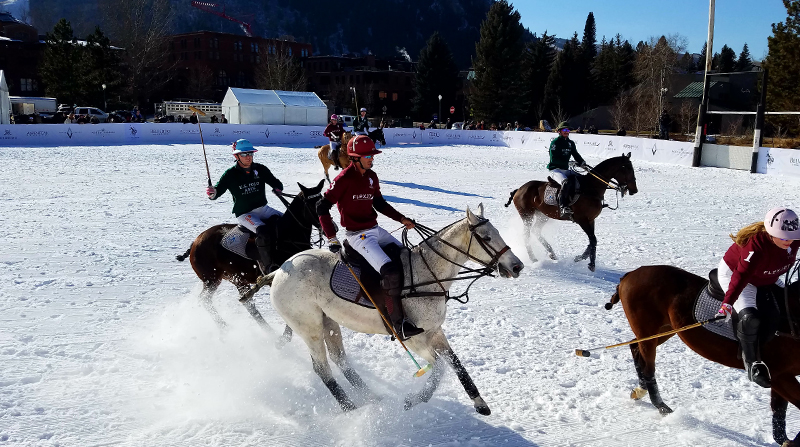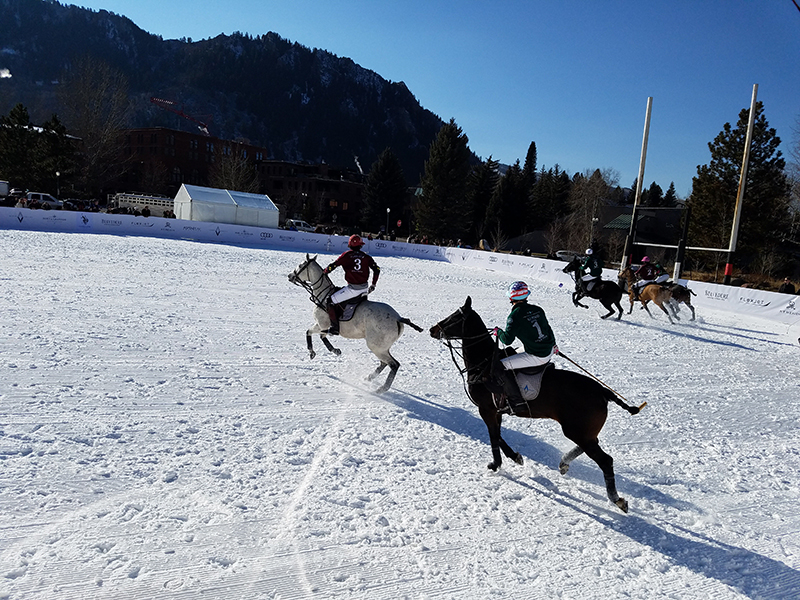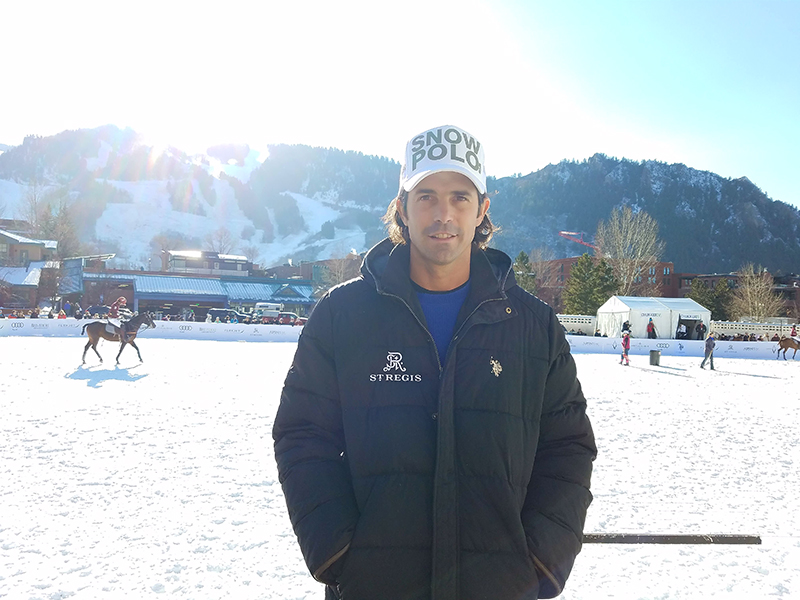

Snow Polo Action. Credit: Linnea Covington
To witness an emerging winter sport, look beyond the slopes or ice-skating rink. Snow polo happens on a field covered with powder.
In Aspen, a place better known for its skiing than its stallions, polo players and ponies from around the world gathered in mid-December for the World Snow Polo Championship. It’s the sole snow polo event in North America and the final stop on the World Polo Tour.
“We get to play in an amazing place with a beautiful background,” says Nacho Figueras, the captain of The St. Regis Aspen Resort‘s team. “Plus, the whole weekend shows the amazing work the St. Regis has done to make it a great experience. It’s the cherry on the pie, a reward after a lot of hard work all year.”
It’s the fourth year the games have been hosted by Marc and Melissa Ganzi, owners of the Aspen Valley Polo Club. Figueras, a champion polo player from Argentina, is one of the stars of the show.
Aside from getting to enjoy the horses, the snow (both falling and man-made) and a stay at Forbes Travel Guide Four-Star The St. Regis Aspen Resort, here are some reasons to get into the unique sport.

Horsing Around In Aspen. Credit: Linnea Covington
History
Though versions of polo have been played for more than 2,000 years, the first snow polo match occurred in 1985. This historic event took place on a frozen lake in the Swiss resort town of St. Moritz.
Over the decades, the popularity of the sport grew in Europe with games played in Italy, France, Austria, Spain and Germany.
Eventually, other countries, such as Argentina, Russia and the United States, joined in on the snow polo craze. In 2011, China hosted Asia’s first snow polo game.
Aspen’s first match took place in 2010, before the Ganzi family became involved.
How it works
Snow polo is played over the course of four to six chukkers (time periods) that run for six minutes each.
The mallet always gets held in the player’s right hand. That way, it’s easier to hit the ball on the offside, otherwise known as the pony’s right side. (The left is called the near side.)
The point is to hit the ball into your net, much like standard polo, only you use a ball that looks a lot like a child’s inflated rubber toy.
Things to know
Unlike traditional polo, snow polo only has three players on each team. “One advantage to snow polo is, because it’s smaller, you feel closer to the action,” Figueras says. “In the big polo field, you have to be educated on how the whole thing works.”
You may also notice that players change horses periodically over the course of a match. It’s a rule that between every chukka the ponies have to be swapped out. Additionally, each animal can only be ridden twice per game.
Regular polo fields run 200 by 300 yards. Snow polo fields are 170 by 80 yards. The fields are made smaller to accommodate the higher altitude and, of course, the snow.

Nacho Figueras. Credit: Linnea Covington
The players
This year’s Aspen games featured two young talents worth watching: Grant Ganzi and Juancito Bollini, both strong athletes in the powder and on the grass. Ganzi is the son of the Aspen Valley Polo Club owners, and Bollini comes from a polo-focused Argentine family.
Team captain Figueras owns a horse ranch in Argentina. He raises, trains and breeds the animals specifically for polo. Today he has 250 acres and around 300 ponies. All four of his children play polo. His 17-year-old son, Hilario, does so professionally.
If you wonder about the horses’ welfare in the snow, Figueras says there’s no need to worry. Though they have what looks to be a thin coat, horses actually love the cold more than heat. Plus, he says, “They have good footing in the snow and are very comfortable in this situation.”
Where to see snow polo action
Obviously, this sport only takes place in the winter, so if you want to take in a match, plan your travels accordingly. The Snow Polo World Cup, the famous St. Moritz game, takes place January 26 though 28. Book your room at the Hotel Schweizerhof early to secure accommodations.
The next Aspen action will take place in mid-December. To be close to the excitement and, maybe meet the players before the start, you’ll want to stay at The St. Regis Aspen Resort.

